Roland System 500 Review
Roland’s entry into the Eurorack market has been added to with new modules this year. We patch up a complete system, and get to know the new Module army…
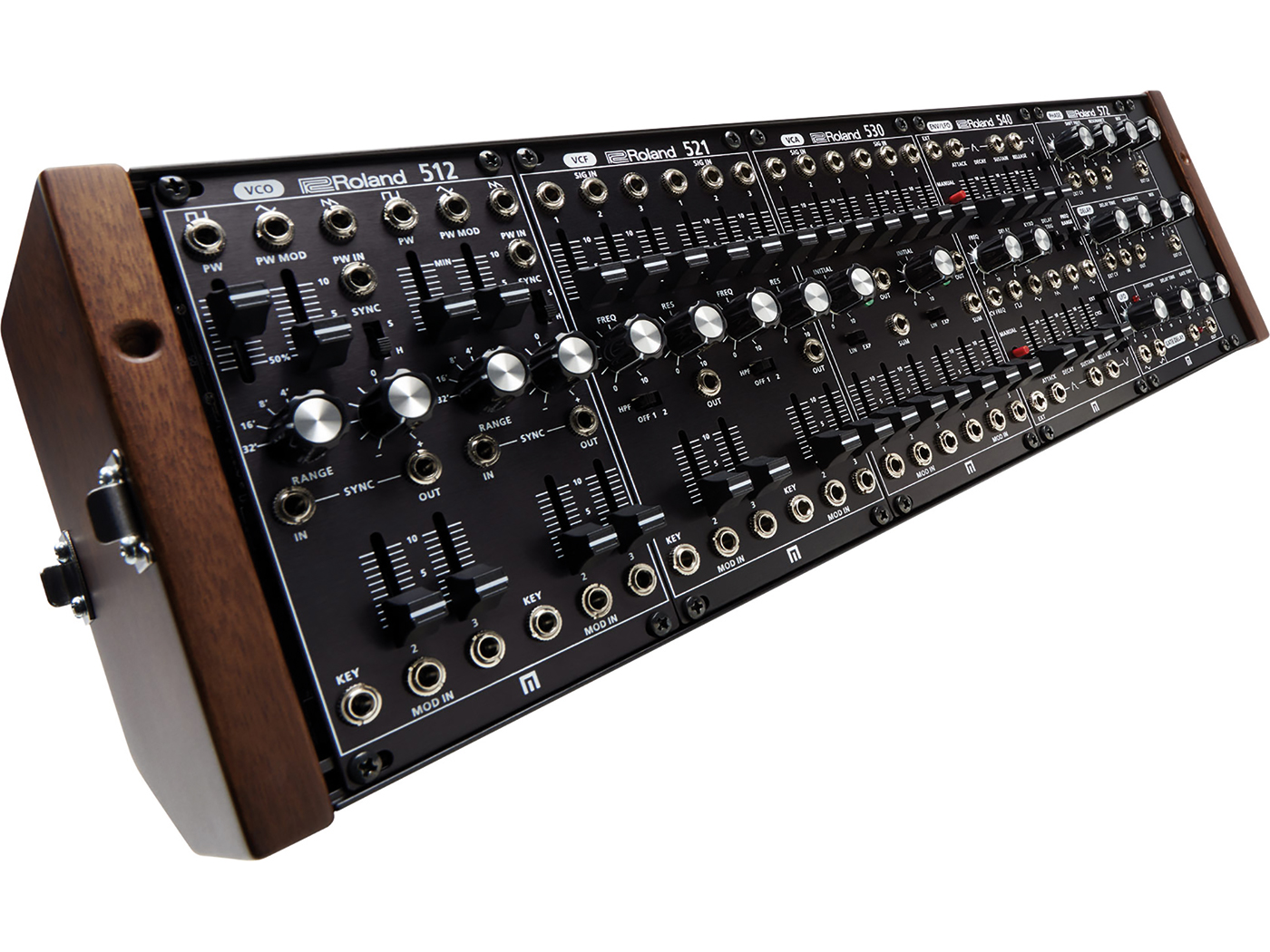
Roland’s entry into the Eurorack market has been added to with new modules this year. We patch up a complete system, and get to know the new Module army…

Price £349 to £389 per module/£1,899 complete
Contact Roland
System 500 key features:
- Complete Eurorack System solution
- Eurorack standard throughout
- Original System comprises 512 VCO, 521 VCF, 530 VCA, 540 LFO/Envelope and 572 FX; £339 each
- Four new modules, 510 Synth Voice £389; 505 VCF £349; 555 Lag/S&H £349; 531 Mixer £389
- Exclusive Roland Eurorack 84HP case (power included)
- Inspired by the System 100M/700
- Collaborative design with Eurorack company Malekko
- Many of the modules offer dual functionality
Ok, I’ll confess! We’ve all made mistakes in our lives, one of mine being that I regrettably sold two cabinets of Roland System 100M, as I was finding that it didn’t fit in with my workflow. With that wonderful sense of hindsight, I immediately regretted the sale and wished I’d kept hold of them, not least of all because of the rising prices of classic kit. So when Roland announced that it was resurrecting the spirit of the 100M in Eurorack form, it was all I could do to stop myself from rocking backward and forward with utter excitement.
Production time again
What followed next was a pretty long period of waiting, which was apparently down to the lengthy production process. The design and manufacture of the original System 500 was a collaboration between Roland Japan and Eurorack company Malekko, based in Portland, USA. Such is Roland’s attention to detail, that modules were said to be flying between the two, in varying states of production and fine tuning, and you can well imagine that this did nothing to help production lead times. It wasn’t that long ago, then, that the original complete system became available, and this is where we’re going to start our tour.
The original modules are available individually or as a collective, which is what we have on review here, fitted in Roland’s own Eurorack case, sized as a single row of 84HP. The five modules don’t quite fill this, so there is an included blanking plate which is bizarrely fitted, leaving a single 1HP space at the end. I’m not sure my Eurorack-centric OCD will cope well with this, but the good news is that the case feels reassuringly heavy, bristling with all the analogue goodness.
The included power supply fits neatly into the back of the case, allowing for the user to place it flat on a desk, or in either angled/vertical positions. The included lid locks onto the front, which is great for transit, although there’s not a lot of room for patch cables, should you wish to transport in a patch ready state.
Powering up and it’s important to remember that this is a fully modularised Roland with no normalised patching, so you’ll have to reach for the included patch cables to get some sound. Starting at the front end of our patch, the 512 VCO module offers two identical and completely independent VCOs, meaning that you’ve got two oscillators for the price of one.
In both cases you have the choice of square, with wide control of pulse width, triangle and sawtooth waves. There’s also hard and soft sync, with a switched range pot and smooth fine-tune pot. The sonic sound-stamp of this oscillator is typically Roland; the square is weighty and sounds outstanding if used in a sub-oscillator capacity, as is the saw which is very bright, and the fact that you have the choice of two independent oscillators opens up plenty of prospects for classic duties and more interesting use alike.
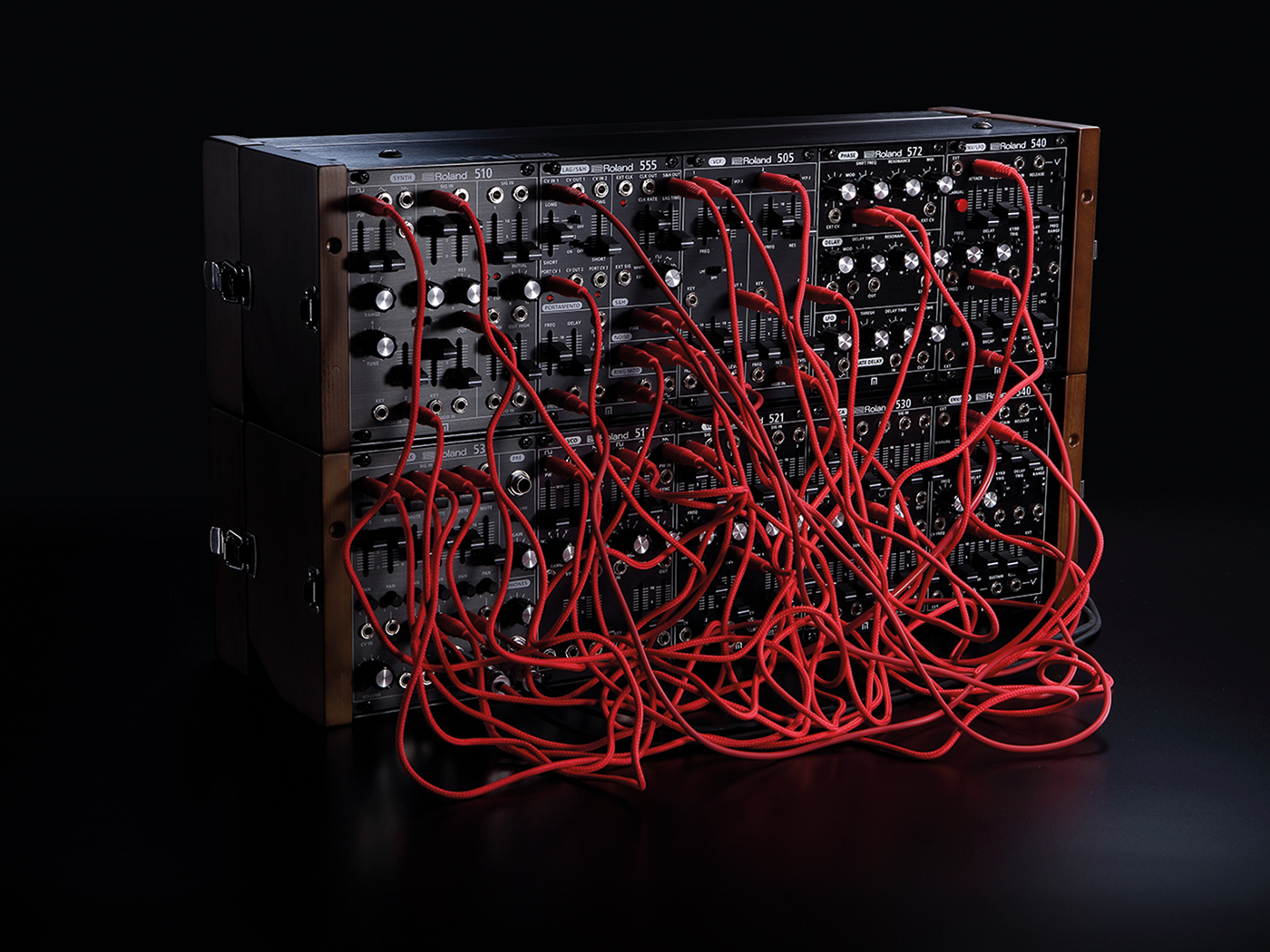
One small gripe is related to the switched range pot, which appears to emit a very high-pitched blip every time it is changed. I can imagine this being an issue for many, not only as a mild irritation, but particularly if you intend to use this in a live environment, or even just in the studio, working on the fly. It strikes me that the addition of a better pot would sort this out, so it’s a little mystifying why this one got through.
Moving filter-long onto our next module, and the 521 VCF has similarly paired credentials; there are two filters onboard, but in common with its influential 100M counterpart, it also offers three inputs per filter. This is incredibly useful, particularly if you want to do something as basic as using the oscillator module to offer a fundamental pitch with independent sub, as both timbre can be applied to the same filter, and still have room for a further signal, and that’s before you’ve even started on the second filter.
The main filtration element here is a low pass resonant filter, with an accompanying 2-step High Pass filter. When I first heard this filter, my feelings were a little lacklustre; it’s not the most adventurous of filters, but it certainly grows on you, and it’s actually the slight fuzziness around the resonance that, with use, becomes incredibly endearing. It’s really very beautiful and typical of classic Roland kit from the early 80s, so I guess that in this respect it’s job done.
Where it possibly starts to get a little unpleasant is when the resonance is overly applied, at which point there’s a large amount of pure whistle, coupled with significant low-end drop out. I guess it’s pretty faithful to its roots, but it does feel like the LPF opens wider than the 100M, working purely from memory. Given the vanilla nature of this filter, which feels 24dB in sound and architecture, some new additions would have been welcome, such as an overdrive option.
You can probably guess the form of the 530 Dual VCA, offering two sides of VCA, with three independent inputs on each, with full attenuation. The flexibility of input routing is enormously useful, with a pot on each side offering a play-through facility, should you want to bypass gating and drone away. It’s also possible to flick between Linear and Exponential behaviour, and again it’s got that slightly vanilla flavour, but you definitely know that it’s a VCA from a certain age and sounds incredibly pleasing with it.
One of the most useful 100M modules was the dual ADSR envelope, with included LFO, and that’s what we have with the 540 module. The controls are fader-based making it fairly unique, as not many Eurorack modules go down the fader route for ADSR control, but it also offers a number of other little niceties, such as the ability to cycle the attack and decay phases, with Serge-like tendencies.
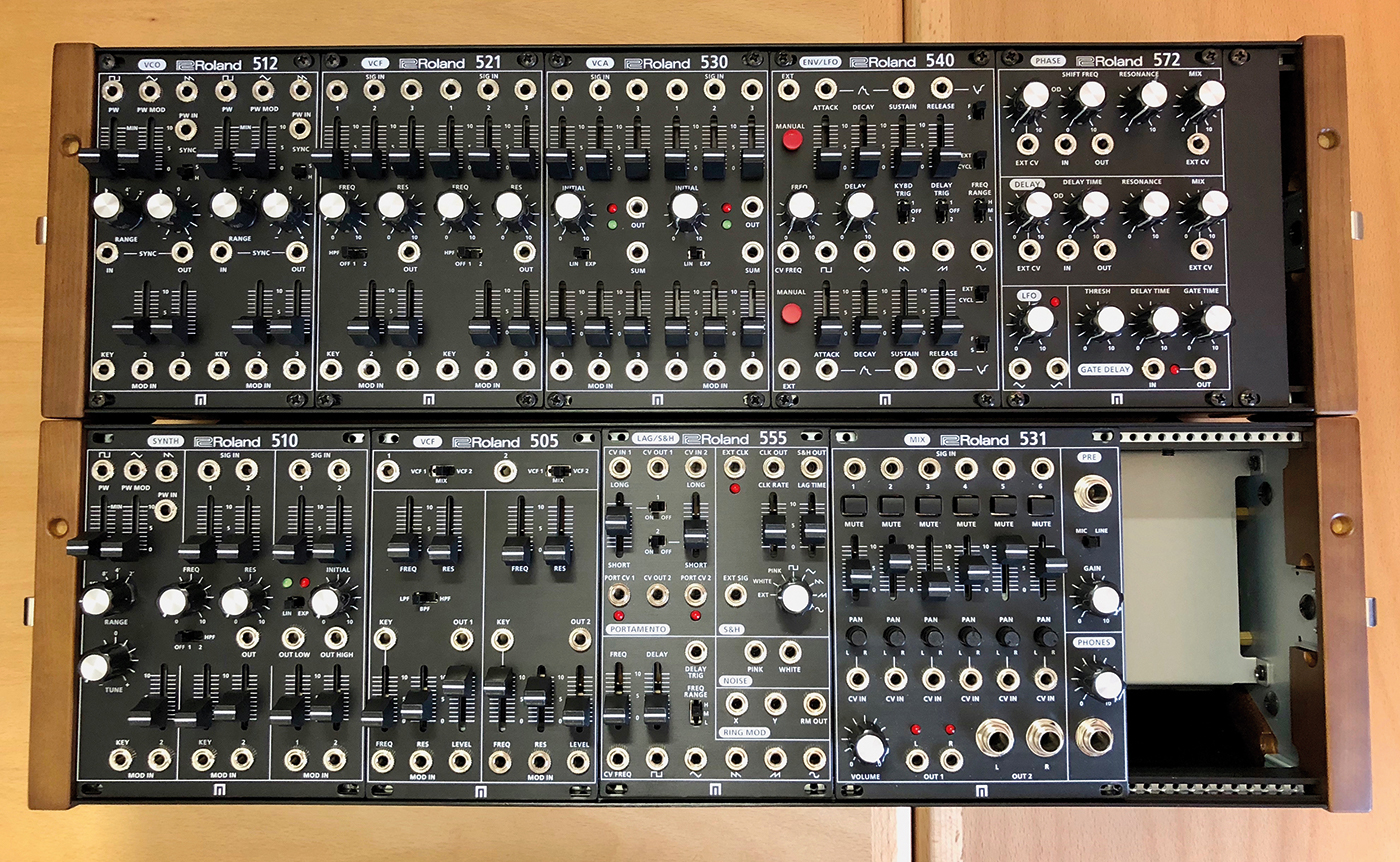
Thanks to a fast/slow option, it’s possible to take the cycle right up into the audio spectrum, at which point lovely timbral colours await. Each envelope offers a couple of outputs, along with an inverse shape. The LFO element isn’t lacking either, as it offers five regular wave types, along with oscillation rate under CV control. This is a real goodie; useful, useable and plenty of operational options.
So to the last of the original lineup, which offers the potential for being one of the most exciting. The FX module features Phase Shifter, Delay, Gate Delay and another LFO. The Phaser is pleasant enough, providing decent colour, with the modulation speed being dictated via the onboard LFO, but the Delay is not what you might regard as a conventional line delay, offering a very short delay time, making it far more about modulation than any form of musical delay, and in a similar guise, the Gate Delay does what it says on the tin.
All new modular-cons
And so to the new breed, and leading the charge for new modules, the 510 Synth module offers a full synth voice, consisting of single VCO, VCF & VCA. This will be a very useful module if you’re tight for space, and containing all three basic module elements does make it an enticing bargain. The same three square, triangle and saw waveforms are available within the VCO, but with a single offering of each, as opposed to a dual design seen on the 512 VCO module. The square timbre is hard-wired to the filter, with access to the other waveforms through patching, while there are two inputs available to both the filter and VCA, although they will both sum the signal to use a single incarnation of each.
The filter seems to be the same design as the 521, along with the 2-step switched HPF. Putting the module through some A/B tests with the original System 500 modules, there is little to no difference sonically between them. There is a slight difference in the play of the pots between filters, but nothing that would cause offence. As before, this is a sensibly designed module which performs well, albeit slightly safe and vanilla in sonic makeup.
But if vanilla is not your thing, the 505 VCF module could well be the one that interests you, and certainly came as something of a surprise to us all, when announced. Containing a clone of the VCF from Roland’s own SH-5 monosynth, this module has some guts. The 505 offers a dual-filter design, with inbuilt VCA circuitry; VCF 1 is a selectable Low/Band/High pass filter, while VCF 2 is fixed as a Band pass filter.
The first thing that hits you square between the eyes is how much grunt this filter has. Apart from the ability to control cut off and resonance via CV, the interplay between both sides of the filter can be routed and separated, according to selection switches which direct the signal via one of two outputs, with an option for both outputs as well, so you can use the 505 as two filters, or combine them into a state of frenzy.
There are plenty of prizes to be had here; the low pass is untamed and raw, with no bottom end drop out, while the resonance has a lovely overdriven quality, which is not the same as the slightly later 101-esque-style timbre. It’s not sharp, rather gnarly and rich, but the real joy starts when you bring both sides of the filter into play simultaneously, as the sonic characteristics quickly descend into a world of beating harmony, offering both the grotesque and musical in equal portions.
Placing these elements within CV modulation creates some bewildering and wonderful effects, as everything moves around and beats against each other. Without wishing to in any way sound patronising, this is the sort of thing we want; a filter with real colour and charm, that really offers something creatively.
The final pair of modules in the new Roland lineup are pretty utilitarian, with the first offering a degree of creativity within. The 555 Lag/S&H module is positively a cornucopia of gizmos, all of which could be useful at some stage. The Lag section offers two channels of portamento, with a fader for each, designating the degree of time taken between notes or CVs settling. Alongside this, the sample and hold element outputs a clockable signal, generated from a host of timbre which include white and pink noise, alongside another five traditional subtractive waveforms.
A further LFO is also on hand, with independent outputs for each waveform, LFO delay and CV control of LFO oscillation, which is a very decent spec indeed. You’ll also find individual outputs for white and pink noise, as well as a very curious ring modulator. Regrettably, the ring mod felt unbelievably tame, and would benefit from additional controls to boost and drive the signal, to provoke some form of response. As an add-on to this exceptionally useful module, we can let it slide, but it is a real shame, and you’ll not be wanting to buy this module for the ring mod alone.
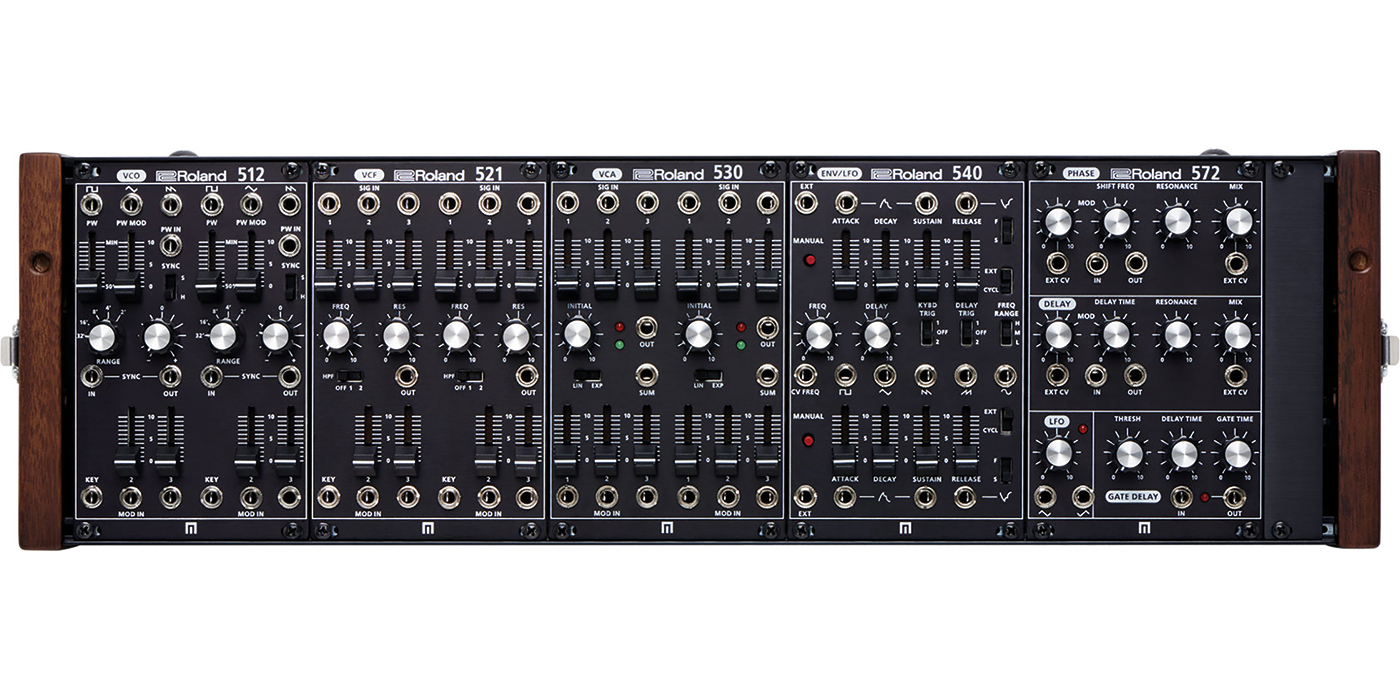
Finally, we have a Eurorack Output Mixer, in the shape of module 531. Offering six channels of mono input, with stereo output via mini-jack, 1/4″ jack and headphones. How sensible, we cry, and with the added ability to pan each channel manually, from a small pot, or via CV control. Each of the six inputs is equipped with its own fader, along with a mute button per channel, neither of which are under CV control, which seems like a little bit of a shame. Channel six also offers the additional capacity of being able to accept an input from the 1/4″ jack which resides next to it.
This can operate at mic or line level, and will prove useful if you just want to add an external source into play. It’s a nice and really useful module, which I found exceptionally helpful during testing, allowing me to route several signals for comparison, but it’s a shame that the mute buttons have no visual indicator, to provide a clue as to position. For playing live, it’ll be difficult to see what’s going on, while the lack of CV control for anything other than panning feels like a shortcoming, and a great shame.
The final performance
So what to make of it all? Well, I’ll confess to being a huge fan of Roland kit from the late 70s/early 80s era, which leads me to suggest that the original System 500 collection is a beautiful thing, but somewhat vanilla sonically. It’s got plenty of creative potential, but it doesn’t pack the punch that many of us might have expected. In general use, I did find some of the labelling of inputs and outputs a tad confusing, as some of the legends above and below the jack points might leave you wondering what socket does what, but that’s an issue with cramming so much into the Eurorack panel form. I also yearned for some Mults to be included in the system, like the original 100M.
The dual-voice capacity of the original System 500 does help, with plenty of room for adding external signals, but it’s with the new modules that I feel that Roland is starting to get into its stride. There’s some really useful stuff here, with the new synth voice and fantastic SH-5 filter shining through alongside the new utility styled modules, and that’s where I can see the original system beginning to become more of a creative and abstract animal, with these useful additions.
Do I really need this?
The concept of buying a complete Eurorack system, from a single company, is a prospect which is open to some debate. The market is saturated with companies, small and large, many of which have plenty to offer, from regular subtractive style modules to exceptionally interesting modules which look to both create and control sound. With this in mind, the original System 500 may appeal to purists wishing to add to a collection, but for the hardcore Euro-fiend, it might not offer enough to warrant the financial outlay. However, the new modules offer plenty, from full-on synth voices to highly desirable filters and utility modules, and will happily find bedfellows in a system comprised of many parts, which is really the whole point of Eurorack.
Alternatives
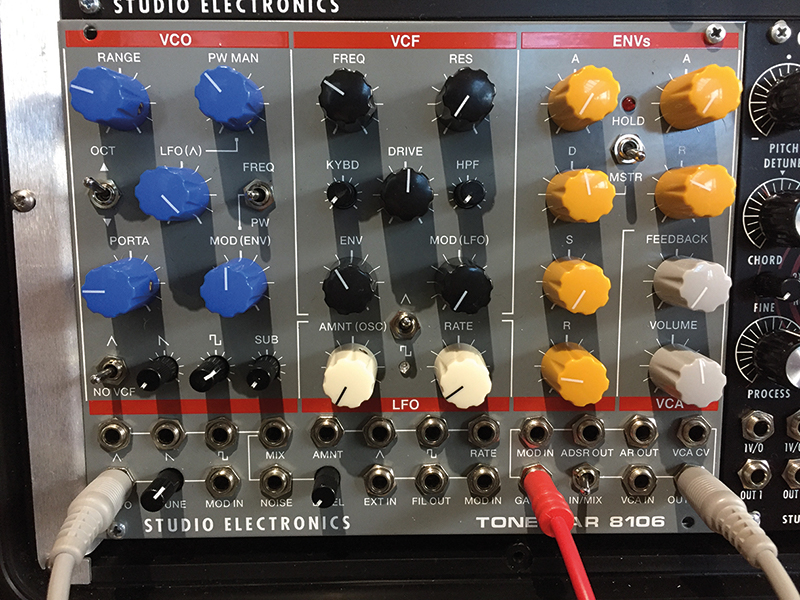
Studio Electronics
Tonestar 8106 £499
If you want that classic sound in a single Eurorack panel, the Roland inspired Tonestar offers an immense amount of sonic potential. The filter is really second to none, and hugely useful musically.
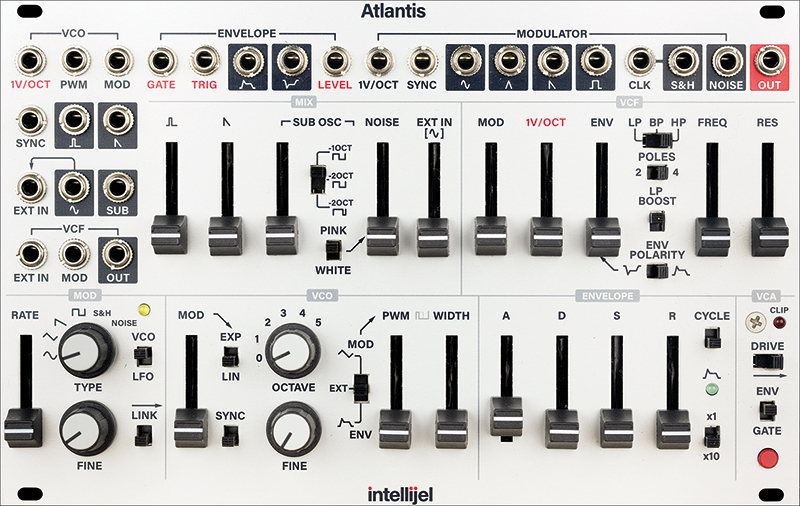
Intellijel
Atlantis £649
Thought by many to be a 101 in Eurorack form, Intellijel have brought us here a module that offers a basic structure, but with a vast range of additional CV control. Sonically great and deep. It’s even got those typically Roland-styled faders.